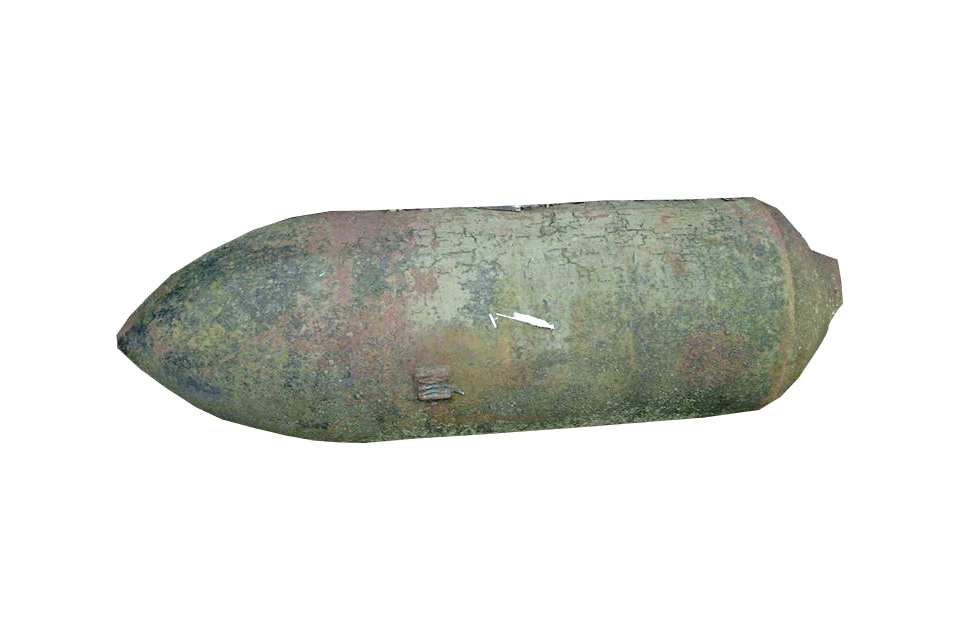
The 250kg bomb, This was arguably the most iconic and widely-used German bomb of WW2. Every type of aircraft in the Luftwaffe was capable of carrying it; perhaps its most notorious use was as the main bomb on the Stuka.

The Type 25 fuse. These were introduced to replace the Type 15. The 25 was an impact fuse and differed from its predecessor by reversing the internal wiring (see the Crabtree, below). In essence, they were electrical capacitors and when fitted, the plungers on the top were connected to the aircraft's own electrical system, thus keeping the charge at its optimum.
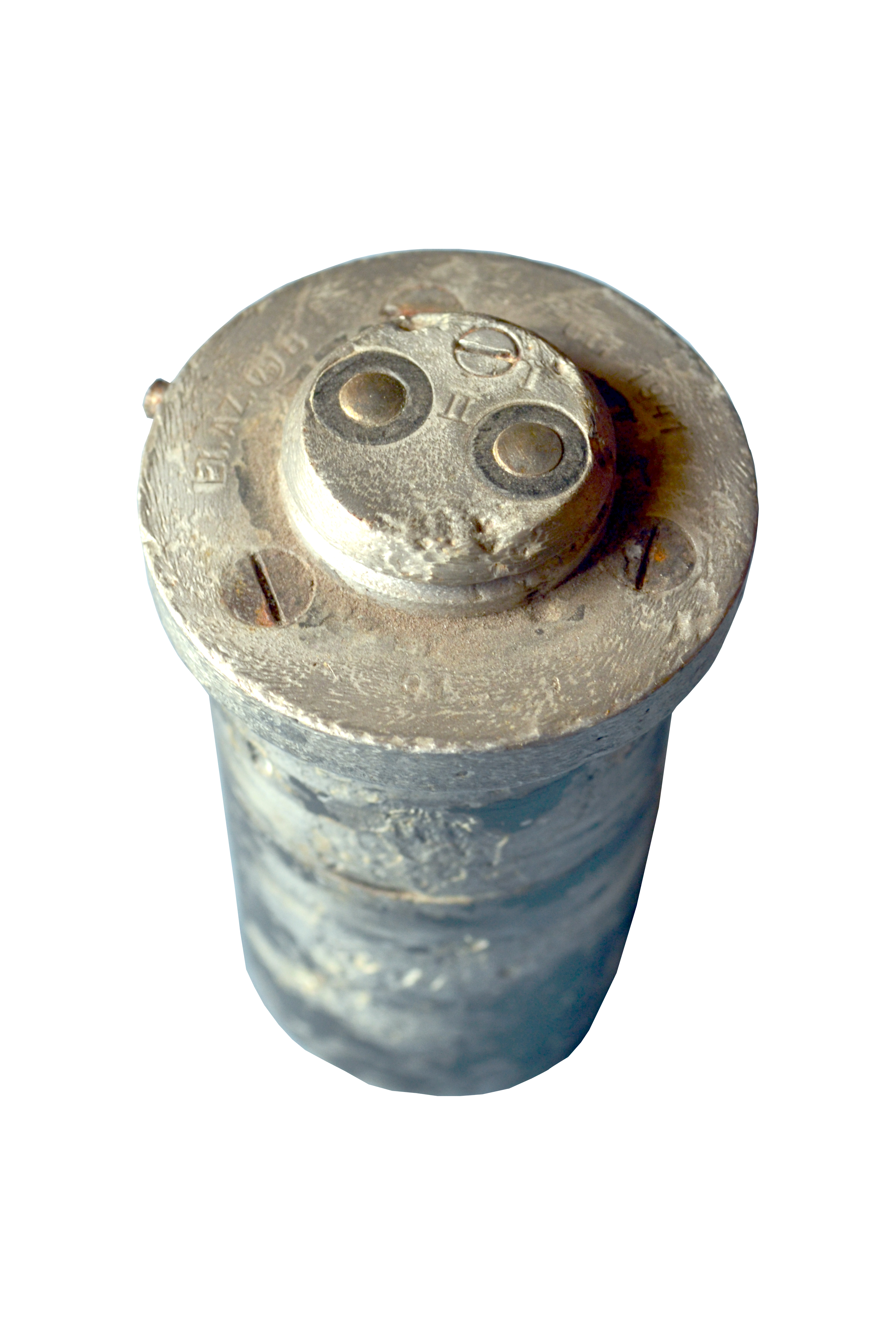

When stored on the ground, the contacts were covered by a cap; this was removed by the ground crew when fitted to the aircraft. On the capped example (top), there is also a 'gain' fitted to the base of the fuse; this increased the detonation potential of the fuse's internal 'matchstick' charge.

The Crabtree discharger. The first bombs dropped on the United Kingdom hit Hoy in the Orkneys, in October 1939. In November, the first bombs to be dropped and fail to explode landed on the Shetlands; these were 50kg bombs and when they were recovered from the ground (they had buried themselves up to ten feet deep), they were taken to RAF Sullom Voe. When examined, it was quickly realised that it would be impossible to destroy them in situ and as such would have to neutralised.
The No 15 fuses could easily be neutralised by depressing the two plungers, thus draining the contained charge and making the bomb safe. To this end, the Research and Experimental Branch of the Ministry of Supply devised the Crabtree for this purpose. The problem came when the Germans introduced the No 25 fuse; due to its internal wiring, when the plungers were depressed, the bomb exploded. This was rectified by simply removing the pins from the Crabtree, which still managed to short-circuit the fuse.
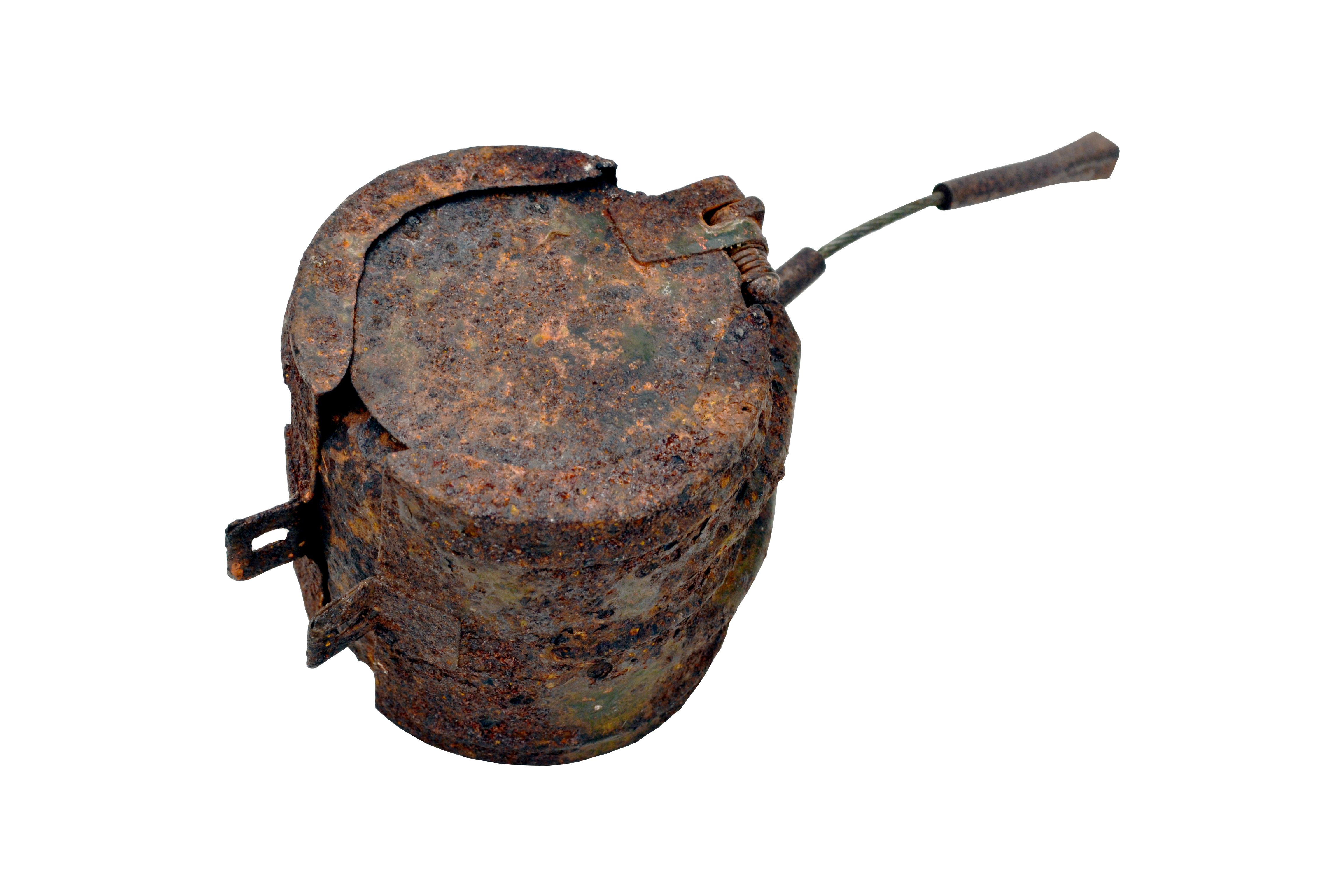
The Butterfly bomb. This was the world's first cluster bomb, which was first used in 1939 when Warsaw was bombed. The next use was against Rotterdam when the city was fire-bombed in 1940. The first use against a target in the UK was in a raid on Ipswich 28th October 1940.
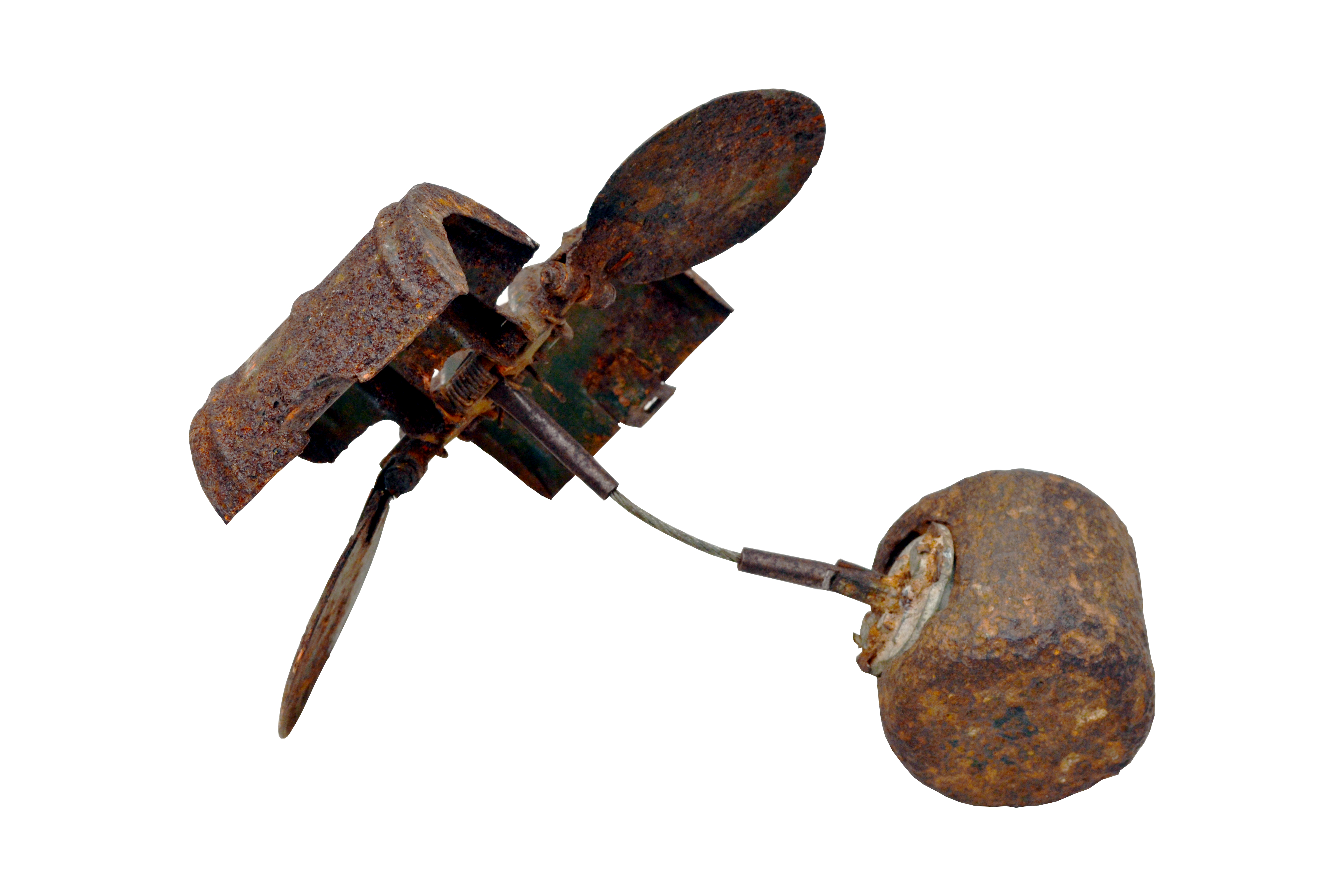
They were housed in a canister (see top photograph) and then released; springs on the outer casing caused the bomb to open and by utilizing the effects of the air as it fell to earth, the casing would act as sails and spin around the wire. This in turn slowly unscrewed and armed the fuse. Depending on the setting on the fuse (see bottom photograph), the bomb would either explode on impact (AZ setting) or sit on the ground until such time as it was moved, then explode (Ziest setting). The Ziest setting was intended to maim anyone attempting to rescue persons trapped in collapsed buildings and as such, examples of the bomb are very rare. The body of the bomb contained 2kg of TNT and was housed in a cast iron casing. This was intended not only to maximise the explosive potential, but also to smash through roof slates. For more exhibits of the Butterfly Bomb click here.
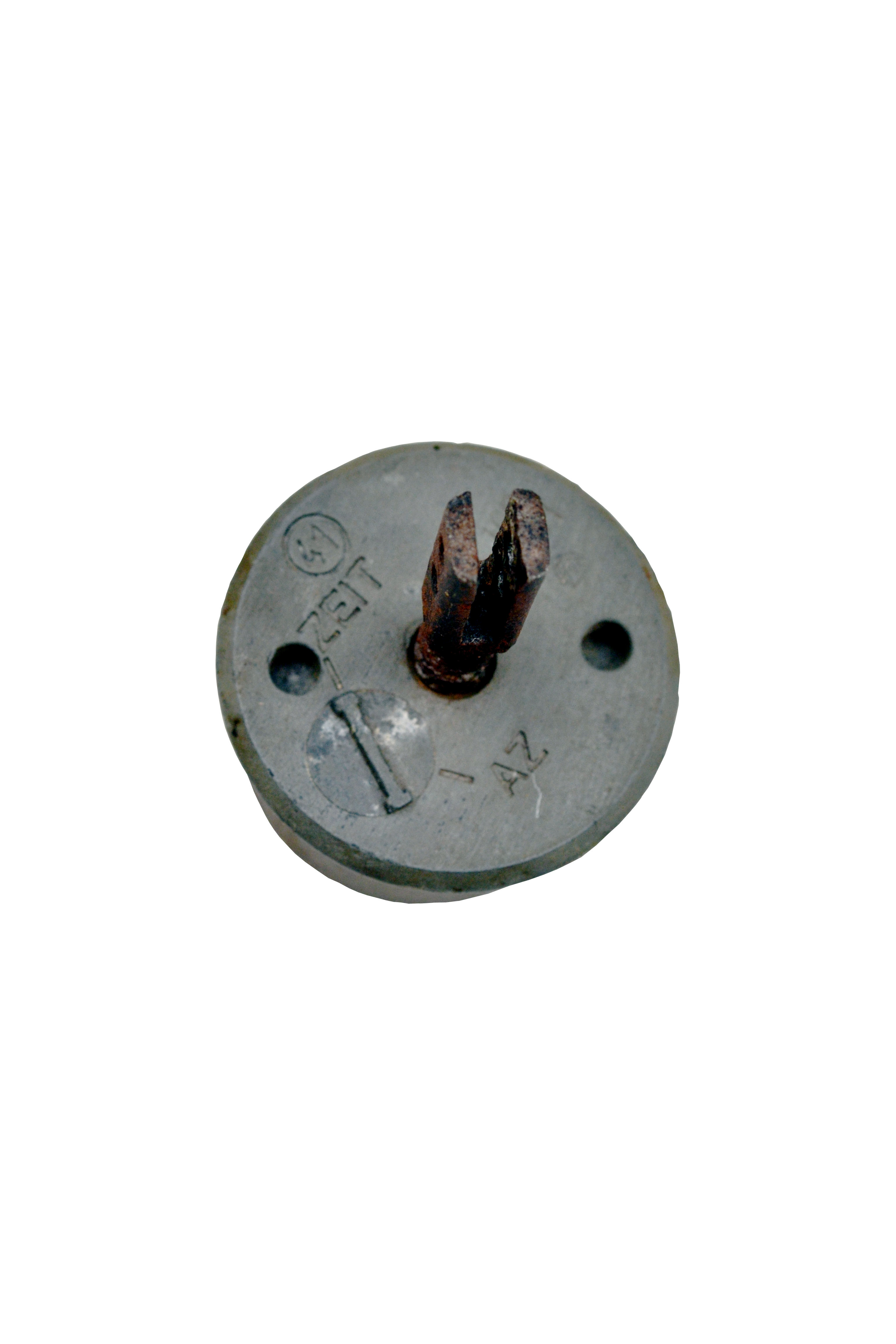
Example of a 41 fuse.
The German incendiary bomb. These were first developed during WW1 and dropped over London by both Zeppelins and Gothas.
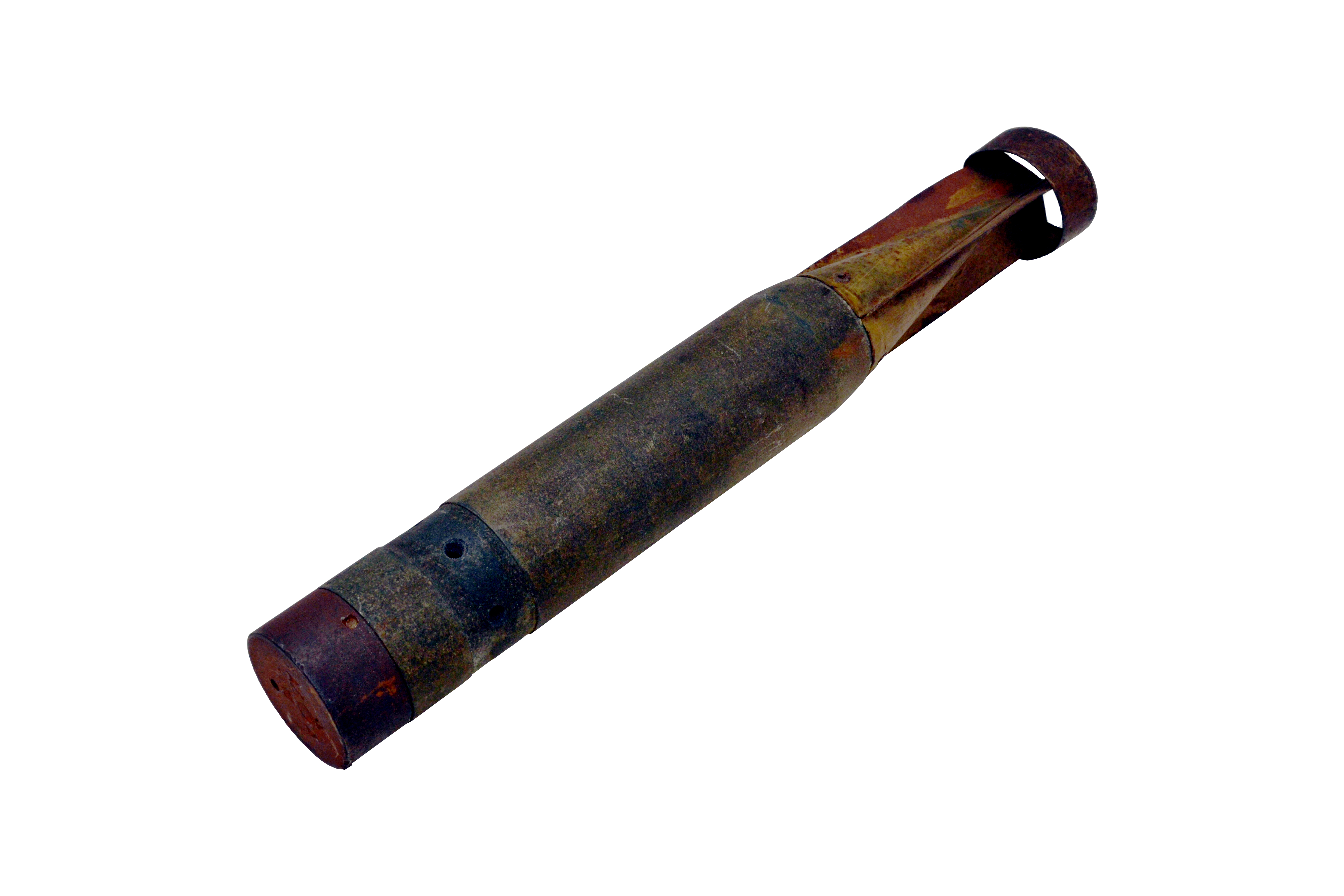
The German incendiary bomb. These were first developed during WW1 and dropped over London by both Zeppelins and Gothas.

The type used in WW2 was a refined design based on the final type from WW1. They were constructed from a core of magnesium which, when detonated, burnt fiercely and were difficult to extinguish. The type shown here has an iron head which, like the butterfly bomb, was intended to smash through roof slates in order to cause the maximum damage . Our example was dropped on Victoria Road, Romford during the Blitz.
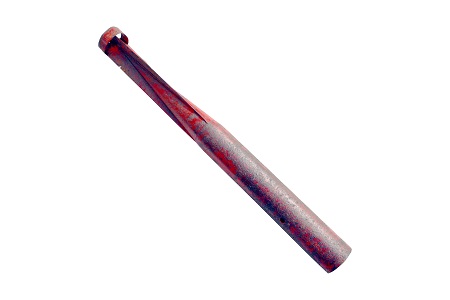
1938 dated training bomb for the incendiary.
For an extrenal website with more information about WWII Bombs, please click here.
Back
To return to our page on Coventry, click here.
To return to our Battle of Britain pages, click here.
To view and read about our SD-1 drop canister and bomblet, click here.
To view a German SD70 Bomb, click here.
For an extrenal website with more information about WWII Bombs, please click here.
Back
To return to our page on Coventry, click here.
To return to our Battle of Britain pages, click here.
To view and read about our SD-1 drop canister and bomblet, click here.
To view a German SD70 Bomb, click here.
